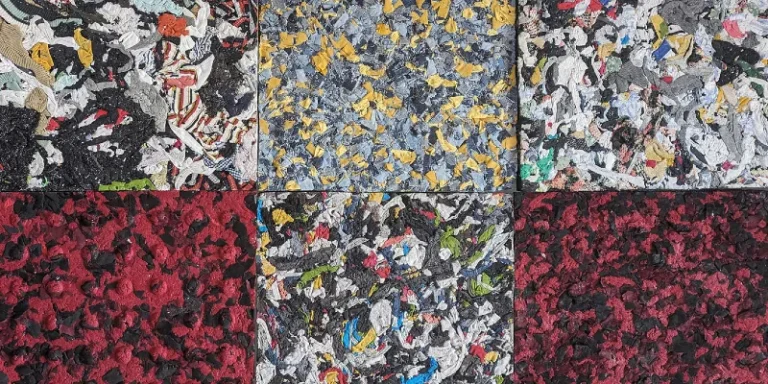Breakfast is the most important meal of the day, but some cereals marketed to kids pack more sugar than a candy bar. Today’s cereals are a far-cry from the original version created by Kellogg. It’s time to take a closer look at what your kids are eating each morning.
Did you know that some popular cereals contain more sugar than a chocolate bar or a donut? You might be surprised to find out which cereals are the worst offenders (the top 5 don’t include “chocolate”). Let’s dive into the sugary world of kids’ cereals and see which ones should be on your radar.
1. Kellogg's Honey Smacks
Sugar Content: 18 grams per serving (3/4 cup)
Comparison: That’s about the same amount of sugar as five Oreo cookies, and that’s only if the kid eats less than a cup!
Honey Smacks tops the charts with its shockingly high sugar content, making it more of a dessert than a breakfast option.
Originally introduced as “Sugar Smacks” in the 1950s, the cereal has undergone several branding changes, including the removal of the word “sugar” from the name. Apparently, Kellogg’s marketing department determined that parents are more likely to purchase Honey Smacks than Sugar Smacks. The high sugar content remained the same, and there’s no honey in this product.
2. Post Golden Crisp
Sugar Content: 18 grams per serving (3/4 cup)
Comparison: Equivalent to eating four mini chocolate frosted donuts.
Launched in the 1940s as “Sugar Crisp,” this cereal’s mascot, Sugar Bear, has been a staple in marketing campaigns aimed at children. The recipe remains largely unchanged despite attempts to present it as a healthier option. Golden Crisp is another cereal that loads up on sugar, leaving little room for nutritional value.
3. Kellogg's Froot Loops
Sugar Content: 12 grams per serving (1 cup)
Comparison: Like eating three fun-sized Snickers bars.
Froot Loops, with its colorful rings and mascot Toucan Sam, has been a breakfast favorite since the 1960s. The bright colors and fruity flavors have made it especially appealing to kids. Kellogg’s continues to market Froot Loops as part of a “balanced breakfast”.
4. Kellogg's Apple Jacks
Sugar Content: 12 grams per serving (1 cup)
Comparison: About the same sugar content as two medium-sized chocolate chip cookies.
Introduced in the 1960s, Apple Jacks have been marketed with the slogan “We eat what we like!” The cereal’s flavor profile has evolved, but its high sugar content remains constant. And no, there’s no apple in this cereal.
5. General Mills Trix
Sugar Content: 12 grams per serving (1 cup)
Comparison: Equivalent to eating two glazed donuts.
Since its debut in 1954, Trix has undergone various recipe changes and even shape transformations. The slogan “Trix are for kids!” remains iconic in cereal marketing.
6. Quaker Cap'n Crunch
Sugar Content: 12 grams per serving (1 cup)
Comparison: Comparable to eating three chocolate chip cookies.
Cap’n Crunch was introduced in the 1960s with the fictional mascot, Cap’n Horatio Magellan Crunch, and remains one of the most popular children’s cereals in the United States.
7. Kellogg's Frosted Flakes
Sugar Content: 12 grams per serving (1 cup)
Comparison: The same amount of sugar as a Twinkie.
Known originally as “Sugar Frosted Flakes,” this cereal has been a breakfast staple since the 1950s, with Tony the Tiger as its mascot. The company removed the word “sugar” from the product’s name and immediately saw an increase in sales. The actual sugar content stayed the same.
8. General Mills Cocoa Puffs
Sugar Content: 12 grams per serving (1 cup)
Comparison: Roughly the sugar content of a serving of chocolate ice cream.
Cocoa Puffs, introduced in 1958, have been marketed with the slogan “I’m cuckoo for Cocoa Puffs!” Cocoa Puffs turns your milk chocolatey, but it also turns your breakfast into a sugar bomb.
9. General Mills Lucky Charms
Sugar Content: 10 grams per serving (1 cup)
Comparison: Equal to eating a small pack of gummy bears.
Since 1964, Lucky Charms has been known for its colorful marshmallows and leprechaun mascot. The marketing has focused on the “magical” aspect of the cereal.
10. Kellogg's Rice Krispies Treats Cereal
Sugar Content: 10 grams per serving (1 cup)
Comparison: Like eating a chocolate cupcake.
A spin-off from the popular Rice Krispies Treats, this cereal brings the dessert right into your breakfast bowl. This cereal version of the popular treat packs a sugary punch that makes it more of a treat than a meal. In truth, there’s more sugar in one serving of this cereal than in an actual Rice Krispies Treat bar.
11. General Mills Reese's Puffs
Sugar Content: 10 grams per serving (1 cup)
Comparison: Almost as much sugar as in a Reese’s Peanut Butter Cup.
Combining two favorites, chocolate and peanut butter, Reese’s Puffs have been a hit since their launch in the 1990s.
12. General Mills Count Chocula
Sugar Content: 10 grams per serving (1 cup)
Comparison: Equivalent to eating a small chocolate bar.
Part of the “Monster Cereals” line, Count Chocula has been a favorite since the 1970s, especially around Halloween.
13. Kellogg's Frosted Mini-Wheats
Sugar Content: 12 grams per serving (1 cup)
Comparison: Comparable to the sugar in two chocolate chip cookies.
Introduced in 1969, Frosted Mini-Wheats have been marketed as a balanced breakfast, by leaning into the whole grain and frosting combo. Of course, the marketing campaigns never cover the amount of sugar in just one cup.
14. General Mills Cookie Crisp
Sugar Content: 12 grams per serving (1 cup)
Comparison: About the same sugar content as three Chips Ahoy cookies.
Cookie Crisp has been marketed with the tagline “You can’t have cookies for breakfast…but you can have Cookie Crisp!” since its launch in the 1970s. And based on the sugar content in one cup, if your kids are eating Cookie Crisp, they are having cookies for breakfast!
15. Kellogg's Corn Pops
Sugar Content: 10 grams per serving (1 cup)
Comparison: Like eating a generous handful of gummy candies.
Originally known as “Sugar Pops,” this cereal was introduced in the 1950s. The name was changed to “Corn Pops” to downplay the sugar content, and it worked. Most Americans strongly believe Corn Pops are healthy.
Conclusion
There you have it, a revealing look at some of the most sugar-laden cereals your kids might be eating for breakfast. With some of these cereals packing as much sugar as candy and desserts, it’s worth reconsidering what’s in the breakfast bowl. Swapping out these sugary options for healthier alternatives can set a positive tone for your child’s entire day.
More To Discover
Now, if you think this sugar content is ridiculous, wait until you find out why John Harvey Kellogg created cereal!
Remember, breakfast should fuel your kids with the nutrients they need, not a sugar rush that will leave them crashing before lunch.















